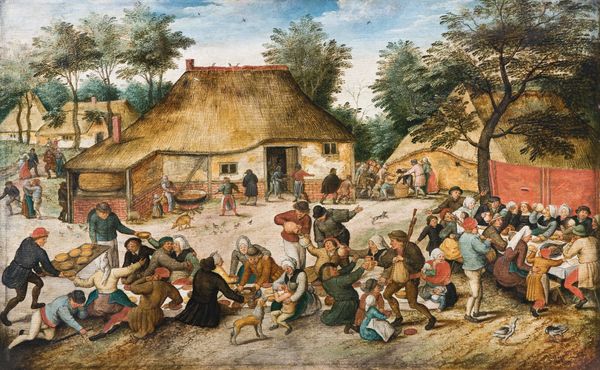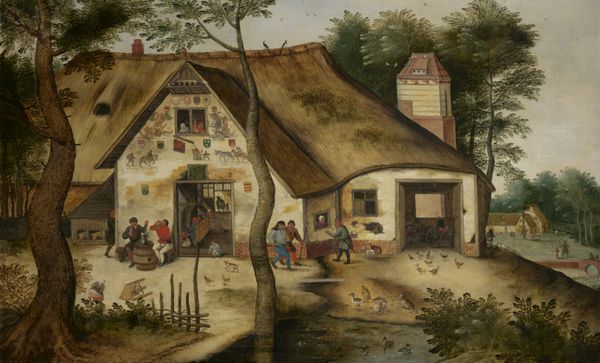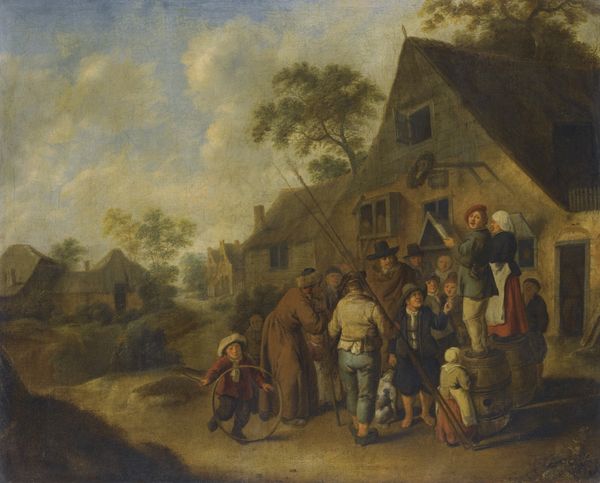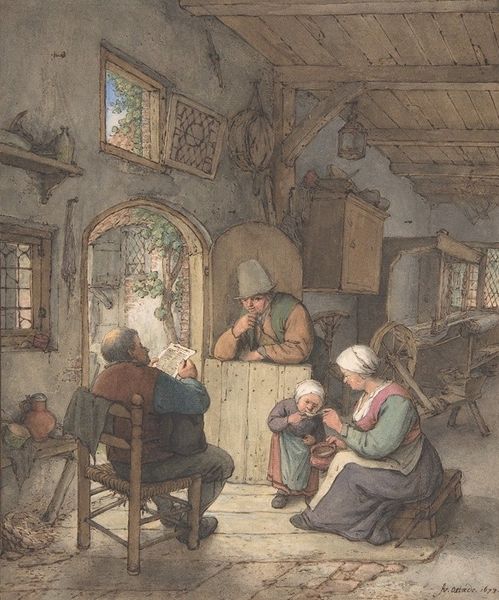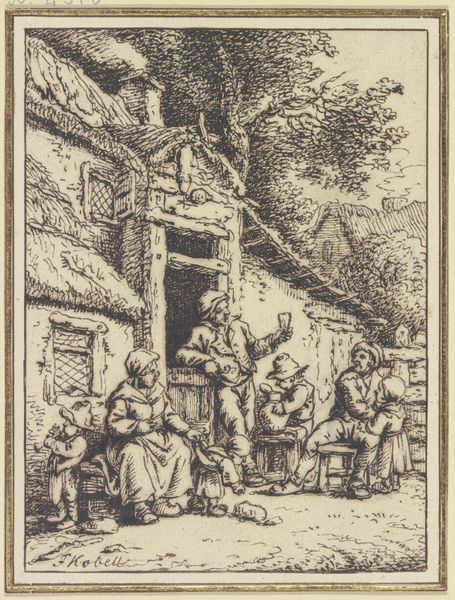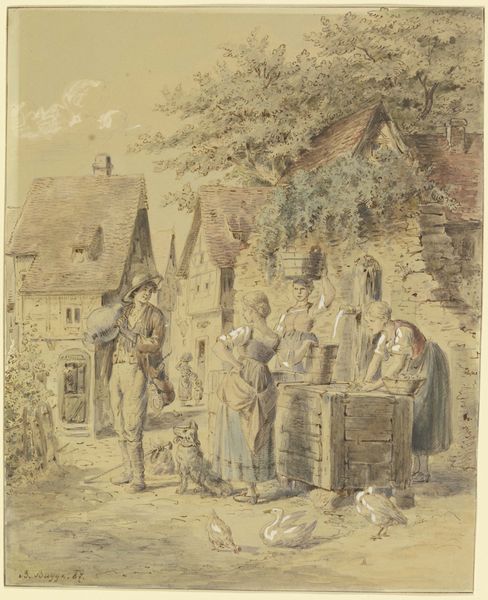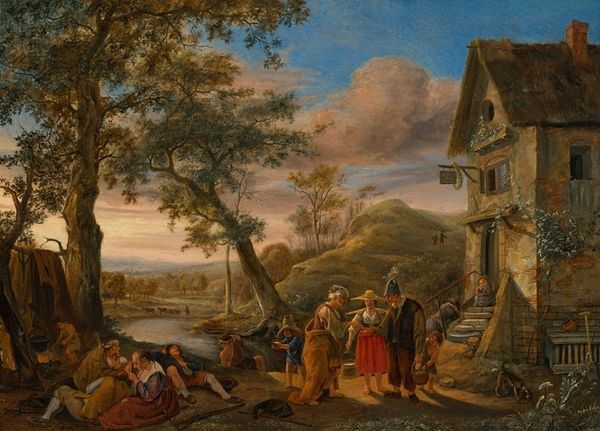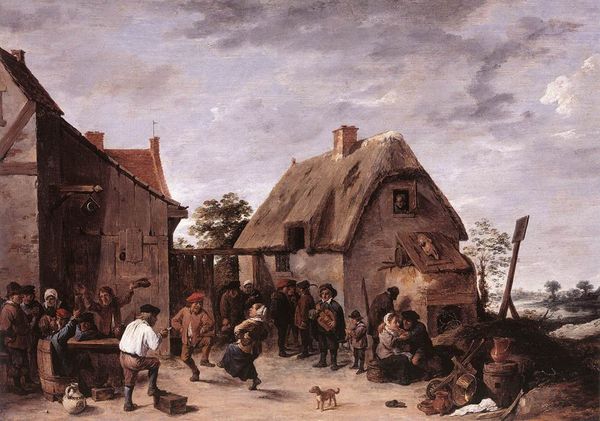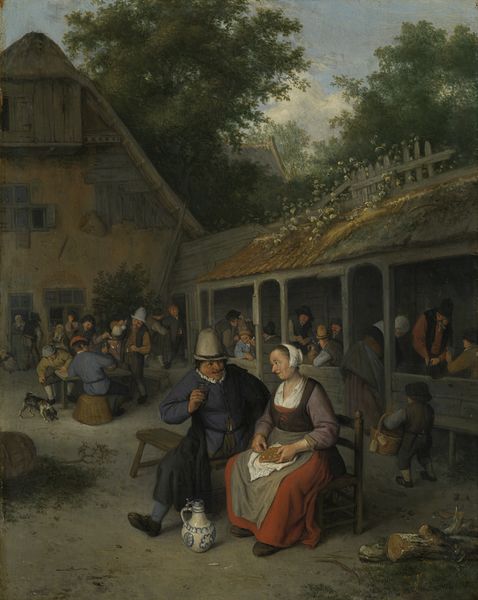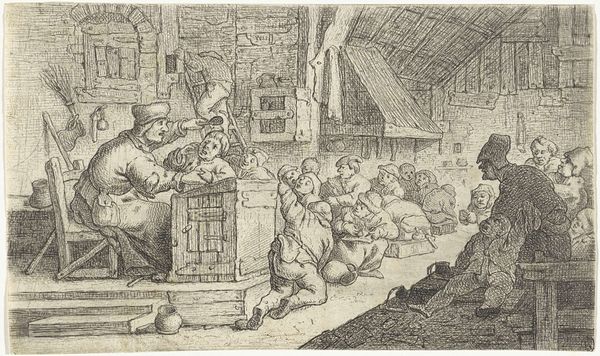
painting, watercolor
#
figurative
#
baroque
#
painting
#
landscape
#
figuration
#
watercolor
#
genre-painting
#
watercolor
Copyright: Public Domain: Artvee
Adriaen van Ostade rendered this scene of "Scalding the Hog" in watercolor, capturing a communal ritual deeply rooted in the cycle of life and sustenance. The prominent motif is, of course, the hog itself, undergoing a transformative process at the hands of the villagers. This act of slaughter and preparation is not merely about food; it is laden with symbolic weight. Throughout history, the pig has been a figure of both abundance and base instinct, appearing in various guises from fertility symbols in ancient cultures to cautionary figures in medieval morality tales. Consider how, in ancient Greece, the pig was sacrificed to Demeter, goddess of harvest, a ritual ensuring future bounty. Here, the scalding of the hog, surrounded by a community, echoes ancient sacrificial rites, yet it also embodies the practical necessities of rural life. The tension between the sacred and the profane, the noble and the crude, engages us on a subconscious level, reminding us of the cyclical nature of existence, where death becomes sustenance, and the past informs the present.
Comments
rijksmuseum about 2 years ago
⋮
A largely youthful crowd has gathered to watch two men scrape a pig’s carcass before butchering it. After 1672, Adriaen van Ostade focused increasingly on drawings rather than his more labour-intensive and expensive paintings. Presumably he was responding to the rising demand for cheaper products among the more careful collectors following the disastrous year 1672, when war had tipped the Dutch Republic into an economic crisis.
Join the conversation
Join millions of artists and users on Artera today and experience the ultimate creative platform.

